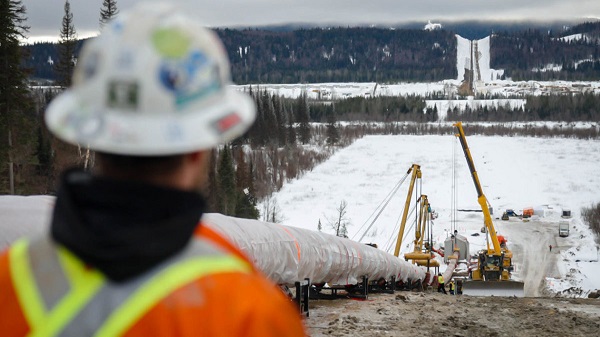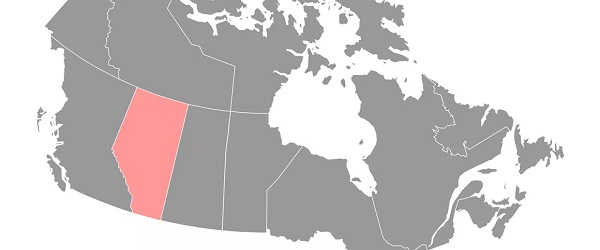Alberta
Health Care Overhaul – Services to be provided by nurses in their own clinics

Strengthening primary care with nurse practitioners
Alberta’s government is expanding opportunities for nurse practitioners to give Albertans greater access to a regular primary care provider when and where they need one.
Too many Albertans cannot find a regular family doctor or have trouble getting an appointment with the one they have. Alberta’s government continues to support and stabilize primary health care across the province by enabling nurse practitioners to open their own clinics, take on patients and offer services based on their scope of practice, training and expertise. Typically nurse practitioners can provide about 80 per cent of the medical services a family physician provides, and this will be reflected in the compensation model when it’s finalized.
Nurse practitioners have completed graduate studies and are regulated by the College of Registered Nurses of Alberta. Like other regulated professions, all nurse practitioners must meet minimum requirements to practise and follow standards set by their regulatory college.
“Nurse practitioners are highly trained and valued medical professionals. By enabling them to open their own clinics, we are ensuring Albertans can more easily access the care they need. This is a significant improvement in our primary health care system that will benefit patients and help improve the overall health and health outcomes of Alberta families.”
As the province enables nurse practitioners to do more of the work they are trained to do, a new compensation model will be created to encourage them to operate independently, adding much-needed capacity to Alberta’s primary care system. Nurse practitioners are extensively trained in their graduate studies to assess, diagnose, treat, order and interpret diagnostic tests, prescribe medications, make referrals to a specialist and manage a person’s overall care.
In addition, through a $2-million grant over the next three years, the Nurse Practitioner Association of Alberta will help to implement a compensation model, recruit other nurse practitioners to participate and provide supports as they work to set up their own clinics.
“There is no doubt about it, we need more health professionals providing primary health care to Albertans. Nurse practitioners are skilled health care professionals who play vital roles in modern health care. This model has the potential to add capacity in communities across the province and help so many Albertans gain access to a regular primary care provider.”
The new compensation model will be phased in and is expected to launch in early 2024 when nurse practitioners who want to go into independent practice will be asked to submit expressions of interest. The model is expected to include payment for a specified number of clinical hours and other commitments, such as caring for a certain number of patients.
“The Nurse Practitioner Association of Alberta is thrilled for the opportunity to support Albertans across the province in accessing a care provider in all health care environments, not just primary care. With this announcement and this grant, the association will be perfectly positioned to ensure that our members will be fully prepared to meet the needs of Albertans in both urban and rural communities. Until now, accessing a nurse practitioner has been challenging. This announcement ends those challenges. The NPAA looks forward to working with Alberta Health to get clinics open and to support NPs in being able to do the work that they are trained to do.”
Nurse practitioners who opt into the compensation model will also qualify for caseload supports once their patient caseloads are established, as announced on Oct. 18. The three-year $57-million support program will help primary health care providers manage an increasing number of patients. Each provider has the potential to receive up to $10,000 annually.
“The shortage of health care professionals in rural communities has always been a challenge that required innovative solutions. The new nurse practitioner model actively addresses this need by enhancing and expanding rural health care deliveries. This new initiative will enable rural Albertans to have better access to primary health care close to home.”
Alberta’s government will continue working with the Nurse Practitioner Association of Alberta and the College of Registered Nurses of Alberta as the compensation model is implemented.
Related information
Related news
- Strengthening health care: Improving access for all (Oct 18, 2023)
Alberta
The beauty of economic corridors: Inside Alberta’s work to link products with new markets

From the Canadian Energy Centre
Q&A with Devin Dreeshen, Minister of Transport and Economic Corridors
CEC: How have recent developments impacted Alberta’s ability to expand trade routes and access new markets for energy and natural resources?
Dreeshen: With the U.S. trade dispute going on right now, it’s great to see that other provinces and the federal government are taking an interest in our east, west and northern trade routes, something that we in Alberta have been advocating for a long time.
We signed agreements with Saskatchewan and Manitoba to have an economic corridor to stretch across the prairies, as well as a recent agreement with the Northwest Territories to go north. With the leadership of Premier Danielle Smith, she’s been working on a BC, prairie and three northern territories economic corridor agreement with pretty much the entire western and northern block of Canada.
There has been a tremendous amount of work trying to get Alberta products to market and to make sure we can build big projects in Canada again.
CEC: Which infrastructure projects, whether pipeline, rail or port expansions, do you see as the most viable for improving Alberta’s global market access?
Dreeshen: We look at everything. Obviously, pipelines are the safest way to transport oil and gas, but also rail is part of the mix of getting over four million barrels per day to markets around the world.
The beauty of economic corridors is that it’s a swath of land that can have any type of utility in it, whether it be a roadway, railway, pipeline or a utility line. When you have all the environmental permits that are approved in a timely manner, and you have that designated swath of land, it politically de-risks any type of project.
CEC: A key focus of your ministry has been expanding trade corridors, including an agreement with Saskatchewan and Manitoba to explore access to Hudson’s Bay. Is there any interest from industry in developing this corridor further?
Dreeshen: There’s been lots of talk [about] Hudson Bay, a trade corridor with rail and port access. We’ve seen some improvements to go to Churchill, but also an interest in the Nelson River.
We’re starting to see more confidence in the private sector and industry wanting to build these projects. It’s great that governments can get together and work on a common goal to build things here in Canada.
CEC: What is your vision for Alberta’s future as a leader in global trade, and how do economic corridors fit into that strategy?
Dreeshen: Premier Smith has talked about C-69 being repealed by the federal government [and] the reversal of the West Coast tanker ban, which targets Alberta energy going west out of the Pacific.
There’s a lot of work that needs to be done on the federal side. Alberta has been doing a lot of the heavy lifting when it comes to economic corridors.
We’ve asked the federal government if they could develop an economic corridor agency. We want to make sure that the federal government can come to the table, work with provinces [and] work with First Nations across this country to make sure that we can see these projects being built again here in Canada.
2025 Federal Election
Next federal government should recognize Alberta’s important role in the federation

From the Fraser Institute
By Tegan Hill
With the tariff war continuing and the federal election underway, Canadians should understand what the last federal government seemingly did not—a strong Alberta makes for a stronger Canada.
And yet, current federal policies disproportionately and negatively impact the province. The list includes Bill C-69 (which imposes complex, uncertain and onerous review requirements on major energy projects), Bill C-48 (which bans large oil tankers off British Columbia’s northern coast and limits access to Asian markets), an arbitrary cap on oil and gas emissions, numerous other “net-zero” targets, and so on.
Meanwhile, Albertans contribute significantly more to federal revenues and national programs than they receive back in spending on transfers and programs including the Canada Pension Plan (CPP) because Alberta has relatively high rates of employment, higher average incomes and a younger population.
For instance, since 1976 Alberta’s employment rate (the number of employed people as a share of the population 15 years of age and over) has averaged 67.4 per cent compared to 59.7 per cent in the rest of Canada, and annual market income (including employment and investment income) has exceeded that in the other provinces by $10,918 (on average).
As a result, Alberta’s total net contribution to federal finances (total federal taxes and payments paid by Albertans minus federal money spent or transferred to Albertans) was $244.6 billion from 2007 to 2022—more than five times as much as the net contribution from British Columbians or Ontarians. That’s a massive outsized contribution given Alberta’s population, which is smaller than B.C. and much smaller than Ontario.
Albertans’ net contribution to the CPP is particularly significant. From 1981 to 2022, Alberta workers contributed 14.4 per cent (on average) of total CPP payments paid to retirees in Canada while retirees in the province received only 10.0 per cent of the payments. Albertans made a cumulative net contribution to the CPP (the difference between total CPP contributions made by Albertans and CPP benefits paid to retirees in Alberta) of $53.6 billion over the period—approximately six times greater than the net contribution of B.C., the only other net contributing province to the CPP. Indeed, only two of the nine provinces that participate in the CPP contribute more in payroll taxes to the program than their residents receive back in benefits.
So what would happen if Alberta withdrew from the CPP?
For starters, the basic CPP contribution rate of 9.9 per cent (typically deducted from our paycheques) for Canadians outside Alberta (excluding Quebec) would have to increase for the program to remain sustainable. For a new standalone plan in Alberta, the rate would likely be lower, with estimates ranging from 5.85 per cent to 8.2 per cent. In other words, based on these estimates, if Alberta withdrew from the CPP, Alberta workers could receive the same retirement benefits but at a lower cost (i.e. lower payroll tax) than other Canadians while the payroll tax would have to increase for the rest of the country while the benefits remained the same.
Finally, despite any claims to the contrary, according to Statistics Canada, Alberta’s demographic advantage, which fuels its outsized contribution to the CPP, will only widen in the years ahead. Alberta will likely maintain relatively high employment rates and continue to welcome workers from across Canada and around the world. And considering Alberta recorded the highest average inflation-adjusted economic growth in Canada since 1981, with Albertans’ inflation-adjusted market income exceeding the average of the other provinces every year since 1971, Albertans will likely continue to pay an outsized portion for the CPP. Of course, the idea for Alberta to withdraw from the CPP and create its own provincial plan isn’t new. In 2001, several notable public figures, including Stephen Harper, wrote the famous Alberta “firewall” letter suggesting the province should take control of its future after being marginalized by the federal government.
The next federal government—whoever that may be—should understand Alberta’s crucial role in the federation. For a stronger Canada, especially during uncertain times, Ottawa should support a strong Alberta including its energy industry.
-

 2025 Federal Election2 days ago
2025 Federal Election2 days agoFixing Canada’s immigration system should be next government’s top priority
-

 2025 Federal Election2 days ago
2025 Federal Election2 days agoChina Election Interference – Parties Received Security Briefing Days Ago as SITE Monitors Threats to Conservative Candidate Joe Tay
-

 2025 Federal Election1 day ago
2025 Federal Election1 day agoLondon-Based Human Rights Group Urges RCMP to Investigate Liberal MP for Possible Counselling of Kidnapping
-

 2025 Federal Election2 days ago
2025 Federal Election2 days agoJoe Tay Says He Contacted RCMP for Protection, Demands Carney Fire MP Over “Bounty” Remark
-

 2025 Federal Election2 days ago
2025 Federal Election2 days agoHong Kong-Canadian Groups Demand PM Carney Drop Liberal Candidate Over “Bounty” Remark Supporting CCP Repression
-

 2025 Federal Election2 days ago
2025 Federal Election2 days agoBeijing’s Echo Chamber in Parliament: Part 2 – Still No Action from Carney
-

 2025 Federal Election1 day ago
2025 Federal Election1 day agoRCMP Confirms It Is ‘Looking Into’ Alleged Foreign Threat Following Liberal Candidate Paul Chiang Comments
-

 2025 Federal Election18 hours ago
2025 Federal Election18 hours agoPM Carney’s Candidate Paul Chiang Steps Down After RCMP Confirms Probe Into “Bounty” Comments





